The Das Keyboard 'Prime 13' & '4 Professional' Mechanical Keyboard Review
by E. Fylladitakis on January 10, 2017 8:00 AM EST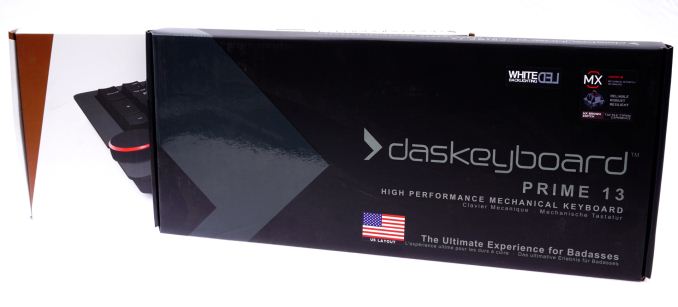
Mechanical keyboards have been in the spotlight over the past few years, with the market growing exponentially and dozens of companies designing and promoting myriads of new products. The technology itself is definitely not new, with the first mechanical keyboards coming out over three decades ago, but they quickly faded away after the introduction of electronic/membrane keyboards that were selling for a fraction of the price. Today, mechanical keyboards are high up on the list of extra peripherals that enthuaists are interested in purchasing for their PC systems.
Introduction
As manufacturing costs came down, mechanical keyboards started finding their way into the consumer market about a decade ago. While still much more expensive than typical membrane keyboards, their market prices were becoming relatively affordable for people that were willing to pay the premium price for a better user experience. At that time, the market was very limited and only a few companies dared to tread towards it, let alone base their foundations on it.
In this review we are taking a look at two mechanical keyboards from Das Keyboard, the renowned US-based designer of mechanical keyboards. While their first keyboard was not a mechanical keyboard, every keyboard after that first one was, and nowadays the whole brand name is essentially bound with the design and marketing of quality mechanical keyboards. The company has supplied us with both their highly popular Das Keyboard 4 Professional and their newest Das Keyboard Prime 13, which are of similar design but are targeted at different target groups.
Packaging and Bundle
Das Keyboard 4 Professional
We received the Das Keyboard 4 Professional in a wide, yet thin white cardboard box. The box itself is of good quality and, with the combination of additional cardboard packaging and polyethylene foam pieces inside it, it is offering excellent shipping protection to the keyboard.
We found no bundle inside the box of the Das Keyboard 4 Professional. Considering that it is a product targeted towards professionals, the company rightfully does not expect them to worry about fancy items such as stickers. A keycap puller would be nice, if only for cleaning purposes. On the other hand, inside the box we found a 35 cm ruler, which doubles as a magnetic tilt stand for the keyboard. Although the presence of a ruler is not a breakthrough innovation, it certainly was rather creative for the designer to replace the keyboard's simple tilt mechanism with an item that can actually be of some use one day in the office.
Das Keyboard Prime 13
The box of the Das Keyboard Prime 13 is of equal size to that of the Das Keyboard 4 Professional, offering the same level of shipping security. The artwork and the aggressive phrasing however clearly hint that this keyboard has an somewhat different market focus.
Inside the box we found a quick start guide with very basic information about the keyboard and a keycap puller. There is no ruler here, the Prime 13 is a standard design with feet for tilt.


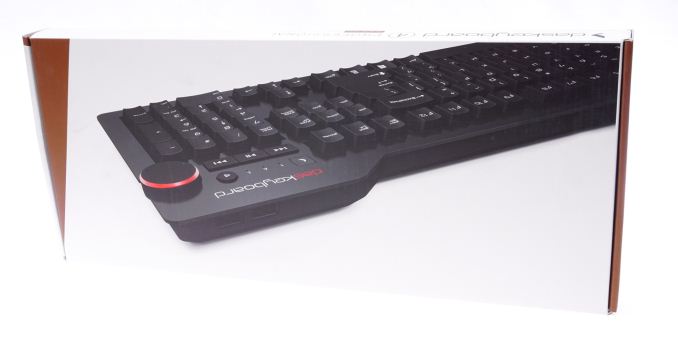
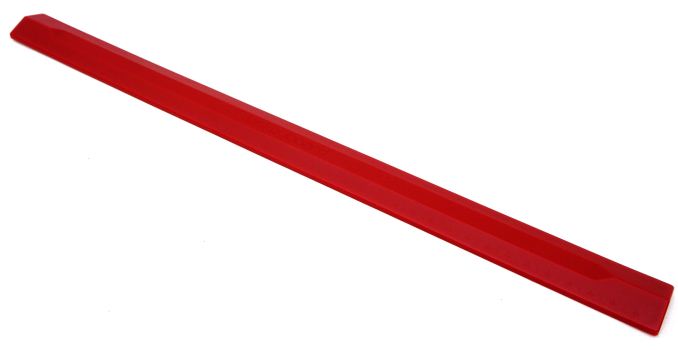
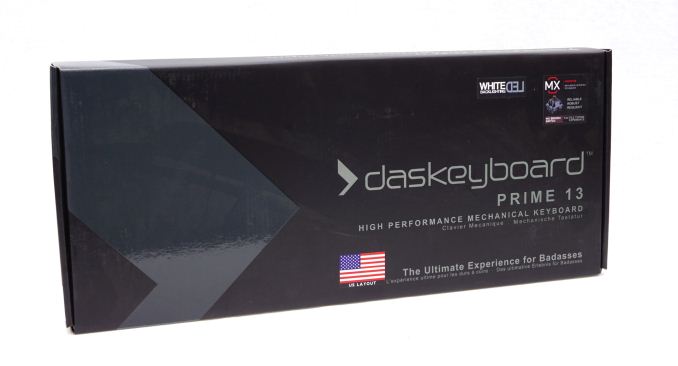
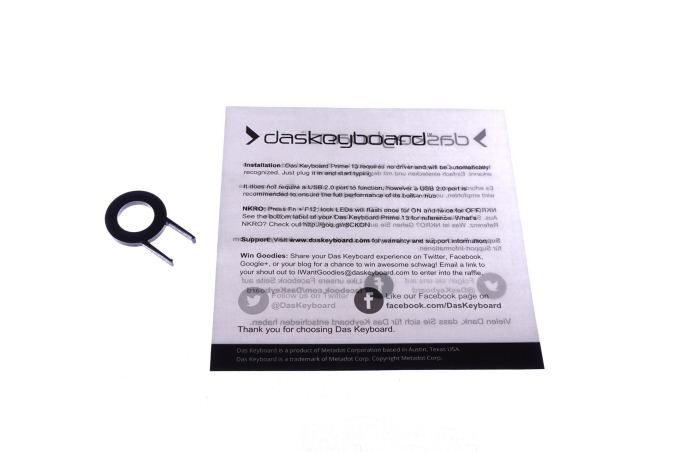








58 Comments
View All Comments
WorldWithoutMadness - Tuesday, January 10, 2017 - link
Please do a review about Topre realforce RGB!Krause - Tuesday, January 10, 2017 - link
I don't think any of these tech sites review the actual high end mechanical keyboards, i've never seen a site like this with a keyboard review/mechanical best of list that actually contained a single keyboard that should be there.Flunk - Tuesday, January 10, 2017 - link
They review what the manufacturers send them.tachi1247 - Tuesday, January 10, 2017 - link
They also can make requests to mfr's for reviews. While smaller sites and individuals will be sent things by manufacturers for reviews to help spread the word about the new product, a site like Anandtech has the industry clout to approach a manufacturer and request a sample for an upcoming article.Holliday75 - Saturday, January 14, 2017 - link
I wonder if Anandtech could....persuade people to turn over samples for testing. Say publish an ever expanding db of devices they requested and either a link to the article or a refusal by the manufacturer to send one. Naturally people will ask why, what are they hiding and could look bad on them.JCB994 - Tuesday, January 10, 2017 - link
What are the high end mechanical keyboards?JoeyJoJo123 - Tuesday, January 10, 2017 - link
The same ones as the low end mechanical keyboards. The difference between Kailh or authentic Cherry MX isn't as noticeable as the difference between $5 rubber dome office keyboard and an average $70 mechanical keyboard.Any further differentiation is pretty absurd and ultimately comes down to brand preference or possibly elitism. The entire point is that mechanical key switches have a MTBF of millions of keystrokes, which is several orders more reliable than rubber dome key switches.
Fallen Kell - Tuesday, January 10, 2017 - link
The difference between a good mechanical keyboard and a crappy one is the same reasoning why rubber dome key switches were invented in the first place, cost cutting. The difference of type of plastic used in a part can be the difference of lasting for 10's of years without reacting to sunlight and oils/grease/dirt from people's hands/fingers or just making it long enough to exceed the keyboard's product warranty. It is the difference between using double-shot keycaps vs "painted and laser etched". A double-shot keycap will never wear out the character on the key from normal use, but laser etched keycaps will wear at some point as the paint does not last forever (unlike physical plastic which will last hundreds of years). The support braces used are another huge area of cost cutting which ultimately affects how well the keyboard survives. And then there is the matter of the switches being properly secured and supported into the PCB (a quick way to cut costs is to skimp on that physical connection, leading to solder points cracking over use as they take the load of the fingers hitting the key).Jetpil0t01 - Sunday, January 15, 2017 - link
I have a Razer Blackwidow Tournament Stealth 2014 and a Das Keyboard 4C Pro TKL and the difference is entirely down to build quality. I actually prefer the typing experience on the Razer, but you can clearly tell the quality of the build of the Das is much better. That being said, I have never had any keyboard in the last 20 years break due to poor build quality of the case, keys, cable or anything else, so its arguable the build quality doesn't add up to much in real terms. I have had the WASD keys on an expensive membrane board get mushy after 5 years of use, but that's still 5 years of use for under $100 which again to me seems trivial as far as the expense of replacing it.I can understand exactly why you would buy the Das Pro model featured here, the USB 3.0 and media controls as well as the clean but sharp aesthetic work perfectly in the office. If you are using it for productivity, the price also becomes trivial, so being higher quality makes sense. Plus there is little to no chance people will be dropping a Corsair RGB into the office without looking like a complete tool, so this seems to hit the target market perfectly.
In the home however, the prime board starts to make little to no sense, outside of brand appeal. If it still had the USB and/or media controls the price might work, but where it is now, there are simply more feature rich products for less money, so it's going to have a tough time selling on build quality alone.
All they needed to do here IMO was take the previous model, drop PBT caps on it, upgrade the hub to USB 3 and keep that in both models and you would have a compelling product. As it is, I would have a hard time recommending this over a Deck or Ducky board for professional or home use and I have had two Das boards previously.
Krause - Tuesday, January 10, 2017 - link
The difference comes down to build quality and keycap material. Any POS that uses clear ABS (garbage plastic) keycaps that are then painted a dark color except for the legend to create cheap backlighting instead of doing true double shots should automatically be given 1 star out of pure principle.On a positive note though, painting (or "coating" in a rubberized spray paint if they try to spin it as a feature) completely negates the importance of using better plastics as the cap material in the first place so it really didn't matter if they used cheap ABS or PBT.